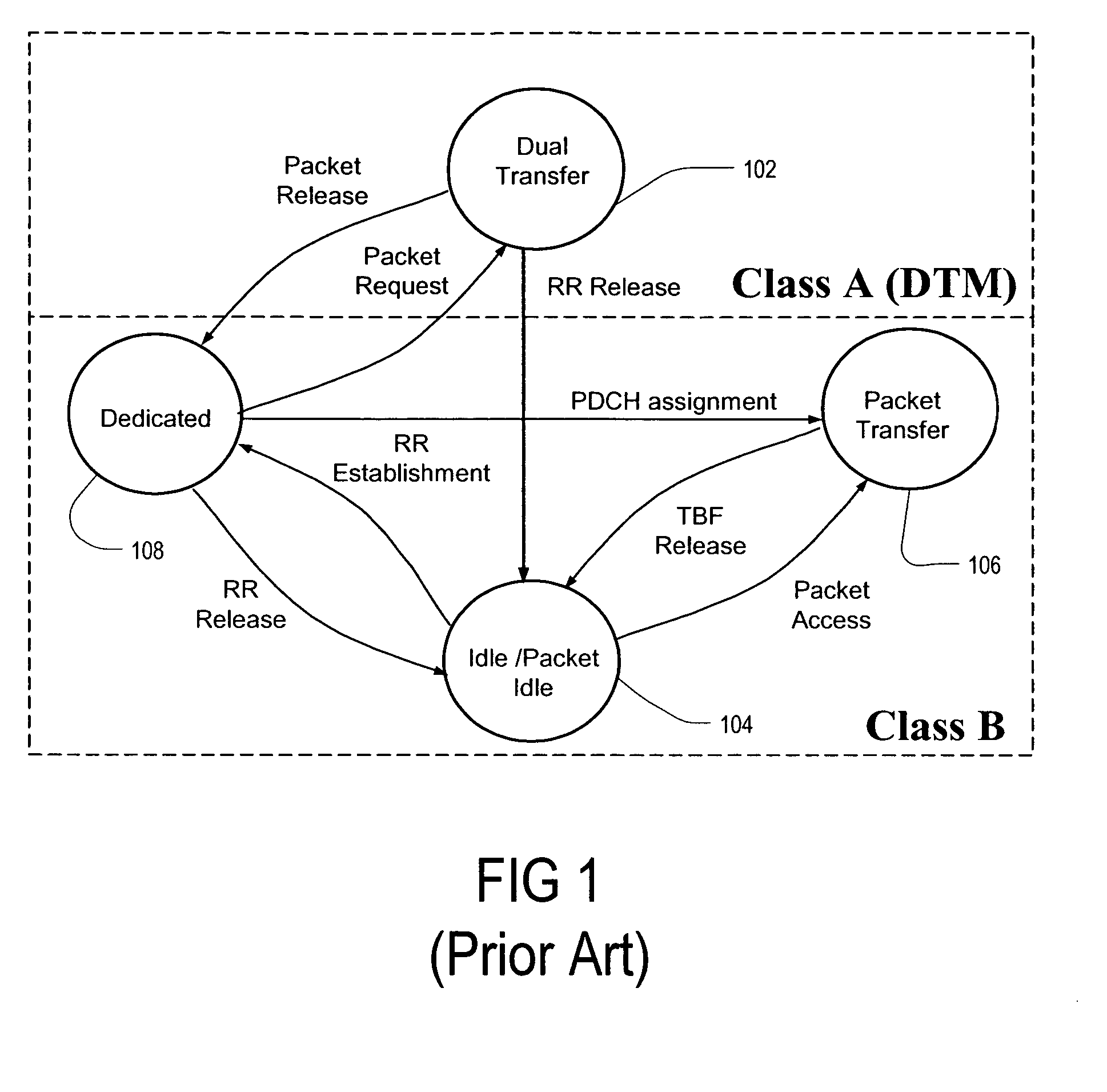Mobile device, system and method for enhanced channel allocation when radio resource connection is released while in dual transfer mode
a dual-transfer mode and radio resource technology, applied in the field of packet switching and circuit switching, can solve the problems of ms behavior, inability to flexibly allocate packet resources, and unsuitable services of circuit switched (cs) bearers for certain types of applications
- Summary
- Abstract
- Description
- Claims
- Application Information
AI Technical Summary
Benefits of technology
Problems solved by technology
Method used
Image
Examples
Embodiment Construction
[0022]Two primary embodiments will be described here: a conversion solution, and also a reconfiguration solution. However, it is to be understood that these embodiments are examples of how the present invention can be implemented, and are not to be construed as limiting the scope of the invention.
[0023]Regarding the conversion solution, a first option involves minimal change to the current working assumption, and would keep in packet transfer mode the same radio resources on one or more Packet Data Channels (PDCHs) than assigned in dual transfer mode. In addition, the network may make a conversion from the radio resources allocated for the RR connection to the packet resources. In dual transfer mode, the allocated radio resource for the RR connection can be either a full timeslot or half timeslot shared with packet transfer. In both cases, it is proposed that the network may make a conversion for the timeslot used for RR connection traffic (e.g. traffic channels TCH / F or TCH / H) to t...
PUM
 Login to View More
Login to View More Abstract
Description
Claims
Application Information
 Login to View More
Login to View More - R&D
- Intellectual Property
- Life Sciences
- Materials
- Tech Scout
- Unparalleled Data Quality
- Higher Quality Content
- 60% Fewer Hallucinations
Browse by: Latest US Patents, China's latest patents, Technical Efficacy Thesaurus, Application Domain, Technology Topic, Popular Technical Reports.
© 2025 PatSnap. All rights reserved.Legal|Privacy policy|Modern Slavery Act Transparency Statement|Sitemap|About US| Contact US: help@patsnap.com



